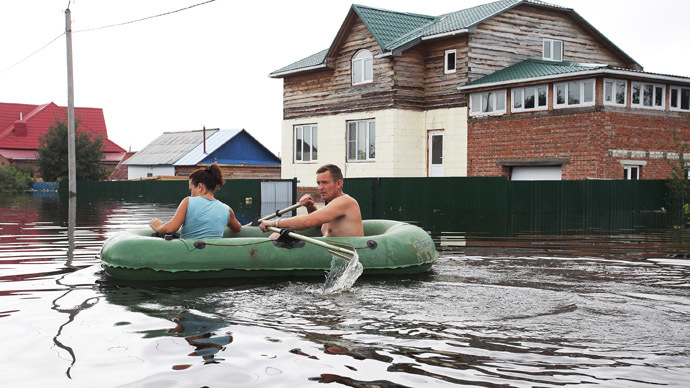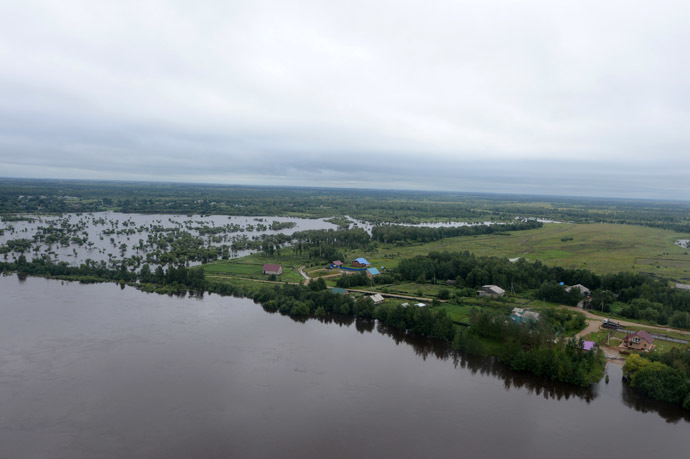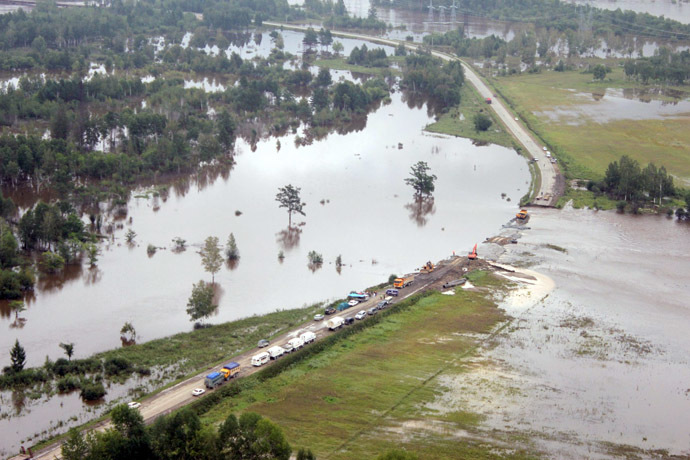
For about three weeks now several regions in the Russian vast eastern part have been fighting with reportedly the worst floods in decades; a state of emergency has been declared in five of the regions.
About 3,500 people have evacuated from flooded areas in southern parts of the Amur Region, as the situation deteriorated dramatically, Emergencies Ministry said on Sunday. Over a thousand houses and 1,500 gardens in 28 settlements have been inundated, while 29 bridges and around 300km of roads have been closed for use.

The damage has already cost the country's economy over one billion rubles, but the final figure is expected to be bigger.
The governor of Primorsky Region - one of the areas affected by the disaster - put the regional losses at 700 million rubles (over US$21 million).
"We compare it with the infamous Typhoon Judy that hit the region in 1989. Now nature has brought even more havoc than that typhoon," Vladimir Miklushevsky said on Saturday, during a conference call with President Vladimir Putin. According to the governor, a consolidated fund of 500 million rubles (US$ 15 million) was set up in the region to finance the post-flood rehabilitation, reported Itar-Tass.
The neighboring the Khabarovsk Region preliminary estimated the damage at 370 million rubles (US$11.2 million). It is feared though that that water in the Amur River will continue to rise from the current critical level of 540 cm and may reach up to 690 cm by August 16.
"This will be a very dangerous phenomenon we have not seen since 1896. According to forecasts, water will rise by more than a meter," said the acting governor of the region, Vyacheslav Shport.




Reader Comments
to our Newsletter